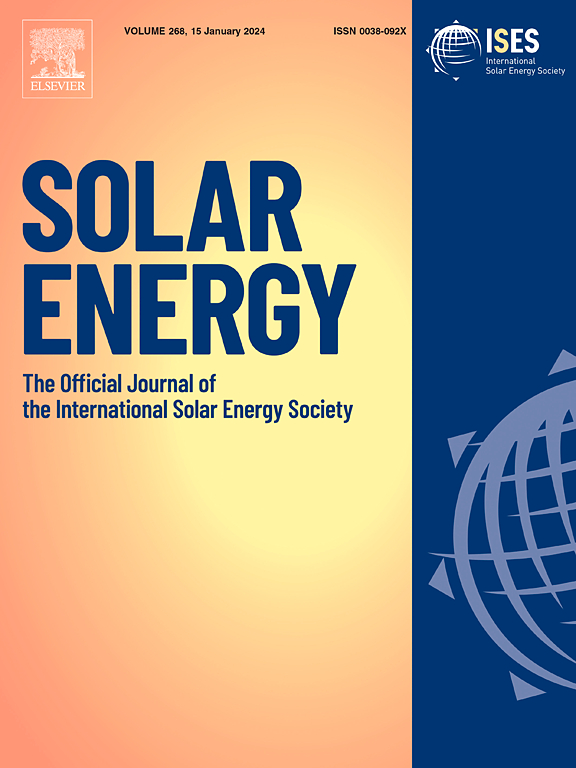通过重新配置光伏组件改善退化光伏电站性能的可行性
IF 6
2区 工程技术
Q2 ENERGY & FUELS
引用次数: 0
摘要
本文分析了通过对光伏组件进行重构来改善退化光伏电站性能的技术经济可行性。据作者所知,这是在考虑到各种降解模式的影响和模块的I-V跟踪成本后,首次在文献中提出分析。研究了各种重构策略,并通过考虑实现各自策略所需模块交换的性能增益和成本,对它们进行了基准测试。基于python的自下而上的公用事业规模光伏电站模型为此目的而开发,该模型为每个模块中的每个电池使用单个二极管模型。以印度和美国这两个具有代表性的国家为例,分析了重构的经济可行性,对比了不同劳动力成本的影响。最后,提出了在何种条件下重新配置可能是改善退化光伏电站发电的可行选择的指导方针。研究表明,当满足以下部分或全部条件时,重构可能具有经济意义:1)测量模块级i - v的小样本;2)劳动力成本低;3)降解机制导致非均匀/局部降解;4)投资回复期短(<;2年)。本文章由计算机程序翻译,如有差异,请以英文原文为准。
Viability of performance improvement of degraded Photovoltaic plants through reconfiguration of PV modules
This paper presents an analysis of the techno-economic viability of performance improvement of degraded PV plants through the reconfiguration of PV modules. To the best of the authors’ knowledge, this is the first time the analysis is presented in the literature after taking into account the effect of various degradation modes and the cost of I-V tracing of the modules. Various reconfiguration strategies are explored and they are benchmarked against each other by considering the gain in the performance and the cost of required module swaps to realize the respective strategies. A Python-based bottom-up model of a utility-scale PV plant is developed for this purpose by using a single diode model for each cell in each module. The economic feasibility of reconfiguration is analyzed for two representative countries − India and USA to contrast the effect of different labor costs. Eventually, guidelines for conditions under which reconfiguration could be a viable option to improve the generation of a degraded PV plant are presented. It is shown that reconfiguration may make economic sense when some / all of the following conditions are met: i) small sample of module-level I-V is measured ii) labor costs are low iii) degradation mechanism results in non-uniform / localized degradation iv) payback periods are short (< 2 years).
求助全文
通过发布文献求助,成功后即可免费获取论文全文。
去求助
来源期刊

Solar Energy
工程技术-能源与燃料
CiteScore
13.90
自引率
9.00%
发文量
0
审稿时长
47 days
期刊介绍:
Solar Energy welcomes manuscripts presenting information not previously published in journals on any aspect of solar energy research, development, application, measurement or policy. The term "solar energy" in this context includes the indirect uses such as wind energy and biomass
 求助内容:
求助内容: 应助结果提醒方式:
应助结果提醒方式:


